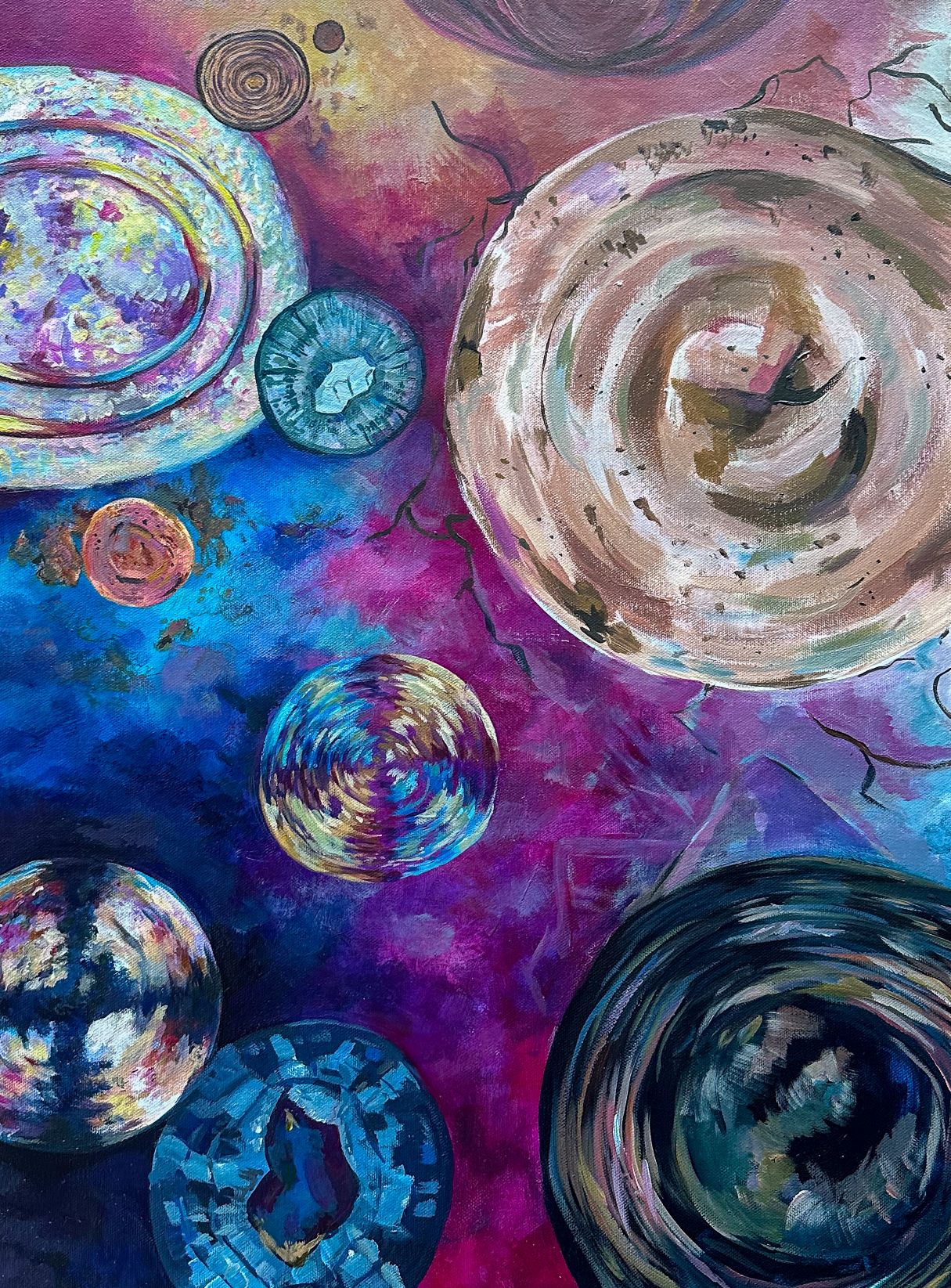Senior, Stamps School of Art & Design and LSA

Acrylic Painting
Abstract
“Ooids: Under the Microscope” is an acrylic painting that merges microscopy aesthetics with sedimentology, offering an artistic interpretation of ooids and imaging techniques. The piece layers multiple perspectives, combining microscopic imagery with naked-eye observations, thin-section documentation with artistic abstraction, and individual ooids with lithified limestone. It captures the dynamic formation of these grains, shaped by calcium carbonate precipitation and rhythmic water movement. The work reveals interference colors and mineral structures through XPL coloring. Additional facets include oosparite and oomicrite, further enriching the geological context. This piece is an artistic interpretation of a fusion of sedimentary processes and micrography mineralogy.
The composition emphasizes form, texture, and the interplay of natural patterns, centering on the ooids’ distinctive spherical shape. Each layer reflects the accumulation of calcium carbonate, either as aragonite or calcite, shaped by the rhythmic movement of water. The artwork, with its oolitic structure and repeated circular motifs, echoes the cyclical rolling of ooids in shallow marine environments. While ooids are typically spherical, they can also appear elliptical or asymmetrically coated, depending on environmental conditions. In quieter waters, for instance, irregular coatings may form (top ooid).
Microscopy aesthetics play a key role in the piece, incorporating petrographic images and interpretive techniques using plane-polarized and cross-polarized light. These reveal a spectrum of interference colors, ranging from monochromatic real-life textures to vibrant hues enhanced by a gypsum plate and Bertrand lens. The background shifts accordingly, referencing changes in optical properties under different lens conditions. The lower left corner highlights calcitic ooids, recognizable by their radial structure, while aragonitic ooids, distinguished by their tangential (‘+’ shaped) structure, are also represented. The color palette is extended with pastels as both minerals exhibit high-order interference colors at the correct thin-section thickness, such as soft greens and pinks, in addition to the yellows and blues that align with their uniaxial (-) and biaxial (-) birefringence.
The presence of oosparite (oolitic limestone) is suggested through its crackled appearance, indicating crystal growth with starry calcite cement. Additionally, oomicrite, a fine-grained oolitic limestone embedded in micritic mud, appears near the blue-tinted region, referencing blue-staining slide techniques to enhance visibility.
“Ooids: Under the Microscope” is an artistic interpretation of multiple microscopic textures and techniques and a visualization of numerous sedimentary features combined into a single composition.
